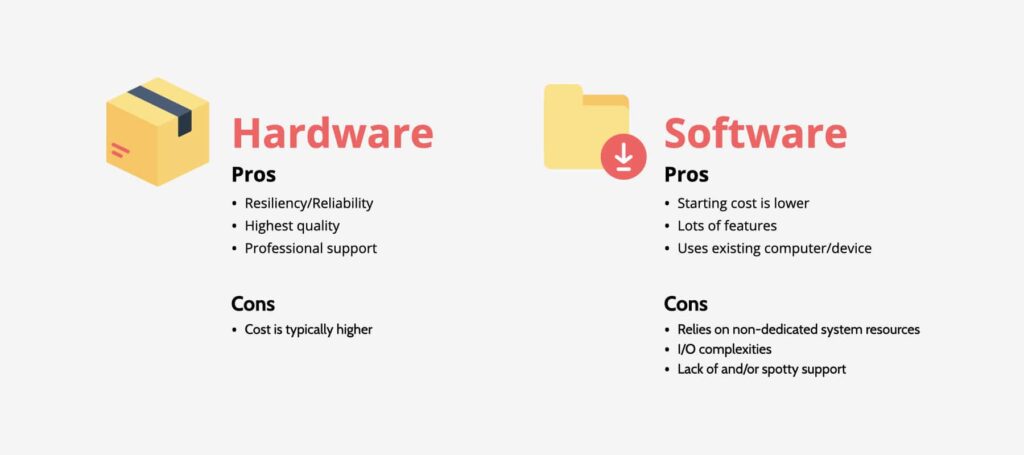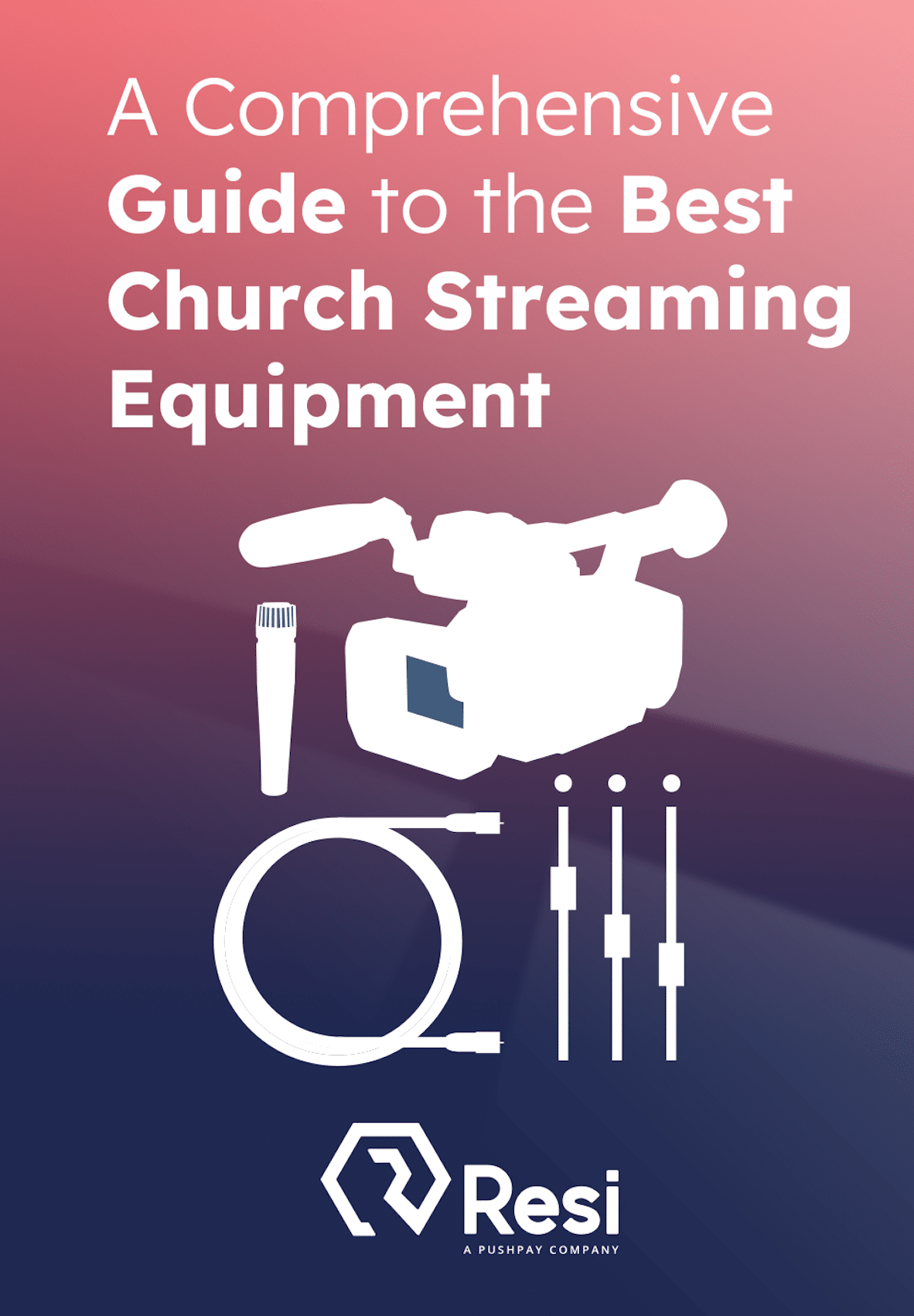
For those looking to start streaming, deciding which gear to purchase can be a daunting decision. A question often asked when preparing to stream is, “Are software encoders good enough, or should I invest in hardware?”
First off, what does a livestreaming encoder do?
A video encoder takes a signal from your camera, switcher, or other video infrastructure and converts it into a form suitable for online streaming platforms. An encoder is the most critical piece of equipment in your video path that will determine the ultimate quality and resiliency of your livestream, so picking the right option is essential.
There are two different roads you can take when it comes to choosing what encoder works best for you. There is software, a cheaper option that relies on your current computer to operate, or hardware, which is a standalone unit with an exclusive focus on video encoding.
Best Livestreaming Equipment
Discover what top-rated equipment we recommend adding to your church streaming toolkit.
Download for free!
Pros and Cons of Hardware and Software Encoders
We created this helpful graphic to better illustrate pros and cons of both options.

Software Encoders: The Pros and Cons
Software encoders include many popular options like ProPresenter, Wirecast, or VMix. These options have a starting price tag that can’t be beat. They also include many features built in like the ability to switch between multiple video sources, add overlaid text and graphics, and more. Because it is using equipment that you already own, it’s an obvious starting place for those wanting to get into the streaming game.
Choosing a software encoder can bring unexpected challenges and costs. Software encoders depend on the computer’s processing power, typically needing a robust processor and GPU to handle multiple inputs and compression into various bitrates. As they operate within the computer’s operating system, juggling multiple tasks with other applications can make stability uncertain, leading to interruptions or reduced quality. Additionally, providing support for software encoders can be complex due to the diverse range of configurations and processing powers they run on.
Hardware Encoders: The Resilient Option
Hardware encoder choices can be equally daunting, if not for the dollar signs alone as they typically start at a higher cost. While they come at a higher starting price than software encoding, it’s worth investigating if the advantages outweigh the cost. Additionally, after considering expenses of upgrading computers for a software encoder, the cost difference may not be as dramatic as you initially think.
Hardware encoders are purpose-built for video streaming, offering an additional level of quality in comparison to their software brethren. These dedicated encoders excel in streaming performance by focusing solely on the task at hand, avoiding interruptions from multitasking. This optimized approach ensures seamless streaming without disruptions like skipping or packet loss, delivering top-tier video and audio quality.
Support for hardware encoders is also typically easier (depending on the provider), because they are built in a single configuration that can be easily diagnosed in the case of an issue. Hardware encoders provide a higher level of comfort to know exactly what you are getting and how it will perform.
The Resi Mini: The Affordable Hardware Option
So, to recap: What are the advantages of using a hardware solution for livestream encoding?
A hardware encoder lets you offload all of the complex video and audio compression processes necessary for streaming onto a dedicated device specifically designed to handle those processes. This means your livestreams are more reliable, stable, and resilient.
And, since hardware encoders are built to specific configurations based on their model, it’s far easier to diagnose an issue than if you were encoding from a laptop or phone.
However, we understand that some churches may be put off by the higher barrier to entry that the cost of a hardware encoder often represents. With its affordable pricing and easy-to-use settings, the Resi Mini is the perfect hardware option for churches looking to upscale their livestreaming experience—without breaking the budget or sacrificing quality.
For churches venturing into their first livestream or those looking to elevate an existing service, the right technology can either stifle or supercharge your growth. At Resi, we firmly believe that once you switch from software encoding to hardware encoding, you’ll never want to go back. With its ability to handle diverse network conditions and its portable design, the Resi Mini efficiently sets the stage for your ministry’s growth.
In review, a software encoder has a lower bar of entry, whereas a hardware encoder sets a higher standard for quality. There can be many variables of involvement that need to be considered before making a final decision. If you have any further questions, we recommend signing up for a demo so you can see the difference for yourself. We will happily walk you through what makes the most sense based on your budget and current gear.







